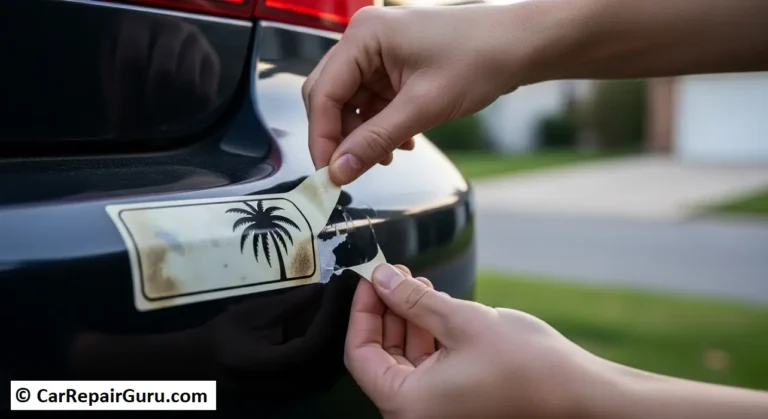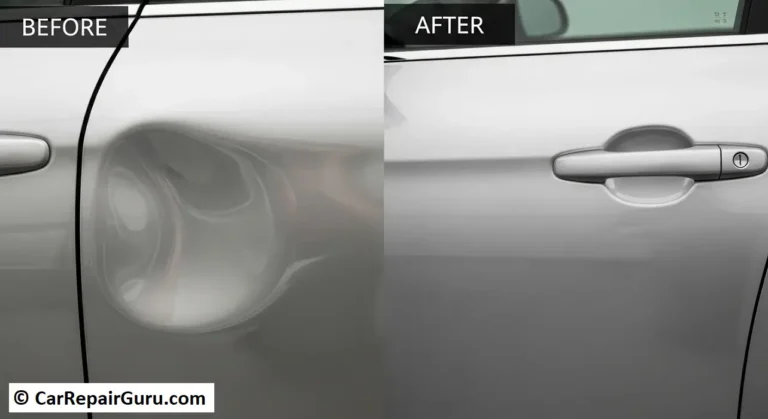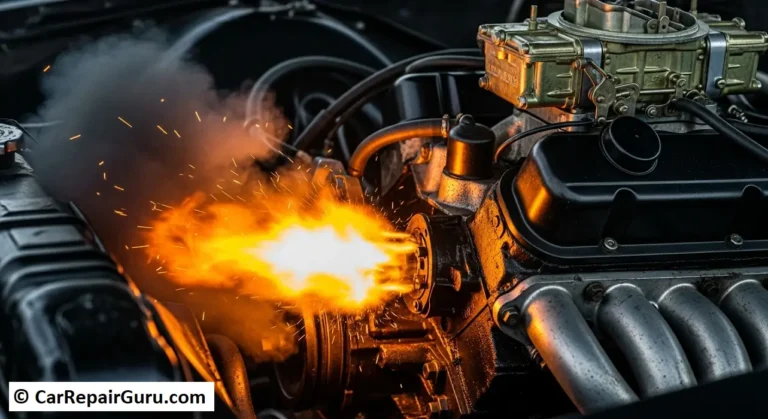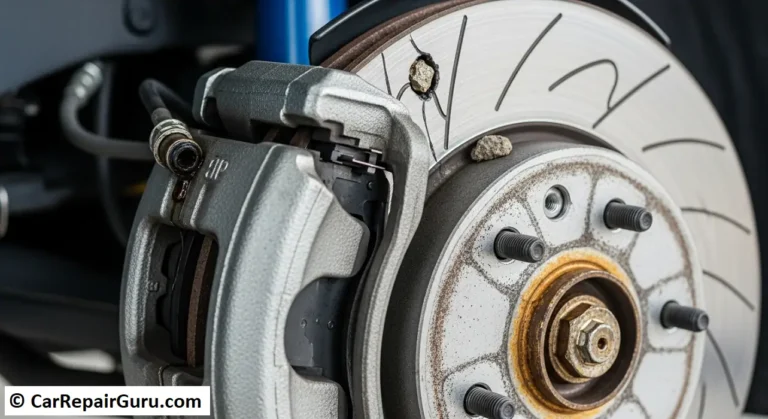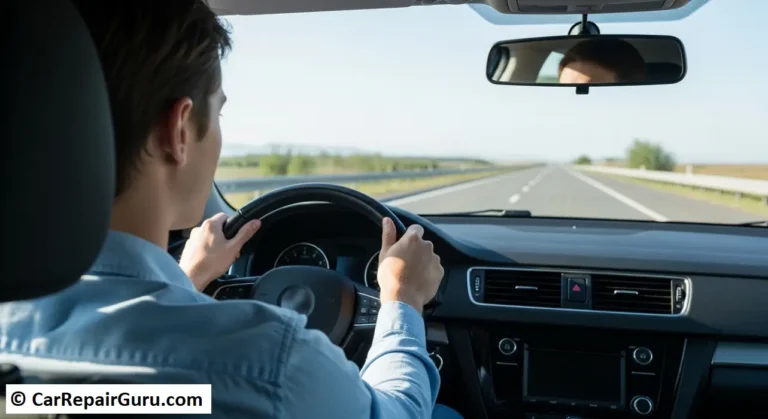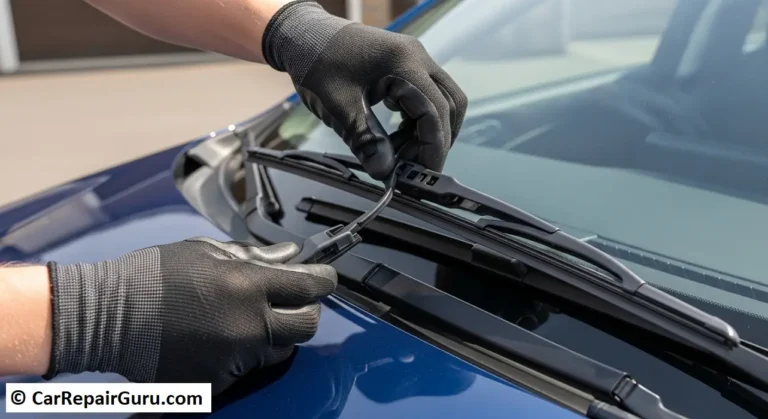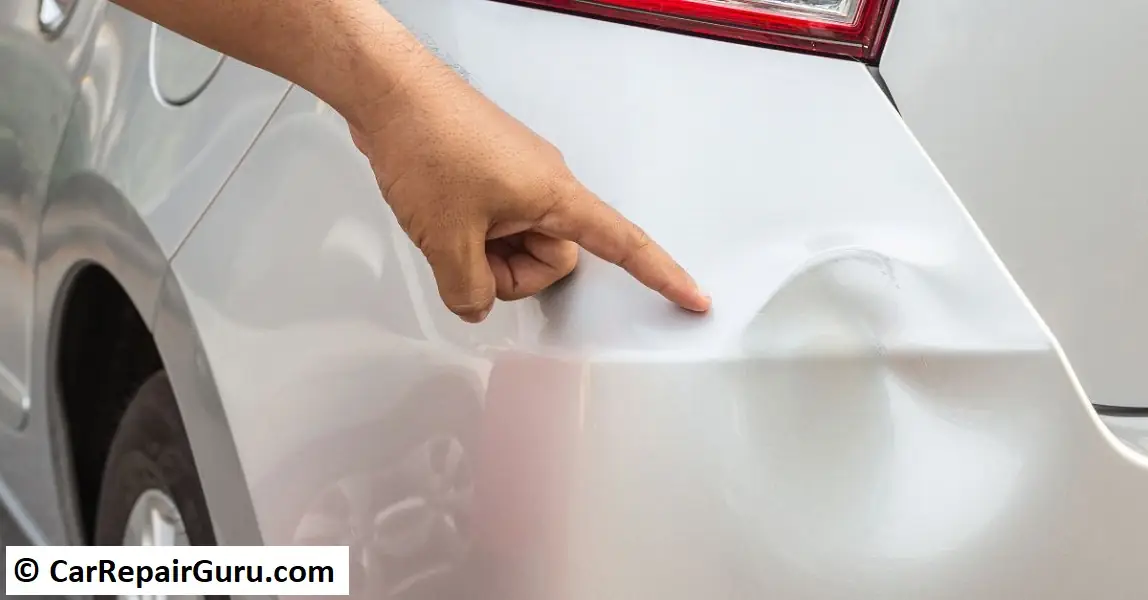
Your car’s bumper is more than just a cosmetic feature—it’s a crucial part of your vehicle’s safety system. Designed to absorb impact during minor collisions, the bumper helps protect vital components like the engine, headlights, and fenders. However, even a small dent or scratch can diminish its effectiveness and make your car look worn out. That’s why car bumper repair is essential—not just for appearance but also for maintaining your vehicle’s integrity.
Common Causes of Bumper Damage
Bumper damage can happen in many ways, often when you least expect it:
- Minor Accidents: Parking lot bumps, fender benders, or low-speed collisions can leave dents or cracks.
- Weather Conditions: Sun exposure can cause fading, while hail, snow, and extreme cold can weaken the material.
- Road Debris: Gravel, stones, and road salt can chip away at the paint, leading to scratches and surface damage.
DIY vs. Professional Bumper Repair
If your bumper has minor scratches or dents, DIY bumper repair can be an affordable solution. With the right tools, you can fix small imperfections at home. However, for deeper cracks, misalignment, or severe damage, visiting an auto body repair shop ensures a professional finish and long-lasting durability.
Assessing Bumper Damage
Before diving into car bumper repair, it’s essential to assess the extent of the damage. Not all bumper issues require immediate replacement—some can be fixed with DIY bumper repair, while others may need professional attention.
Identifying Bumper Materials
Most modern vehicles have plastic bumpers, reinforced with a metal or foam core for impact absorption. Plastic is lightweight, flexible, and easier to repair. However, older cars or heavy-duty vehicles may have metal bumpers, which are more durable but prone to rust and dents.
Understanding Different Types of Bumper Damage
Bumper damage varies in severity, influencing whether you should repair or replace it:
- Scratches and Scuffs – Surface-level marks from minor contact with objects, road debris, or tight parking spaces. These are the easiest to fix with bumper scratch repair kits.
- Dents and Dings – Caused by fender benders or impact from other vehicles. Bumper dent removal is often possible with heat or suction tools.
- Cracks and Splits – More serious damage that can weaken the bumper’s structure. Plastic bumper repair methods, such as welding or using epoxy, can sometimes restore the bumper’s integrity.
- Complete Breaks or Severe Damage – If the bumper is heavily cracked, misaligned, or detached, bumper replacement is the best option.
Repair or Replace?
If the bumper damage is minor—like light scratches or small dents—DIY bumper repair is an affordable and effective solution. However, for deep cracks, exposed reinforcement, or compromised safety, professional auto body repair is necessary.
Understanding the extent of your bumper damage helps you make the right decision, saving time and money while keeping your car in top condition.
DIY Car Bumper Repair Methods
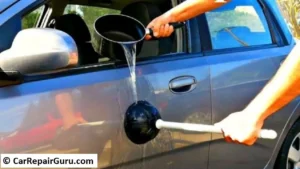
If your bumper has minor damage, you don’t always need to rush to an auto body shop. Many common issues, such as scratches, dents, and even small cracks, can be fixed at home with the right tools and techniques. Here’s a step-by-step guide to DIY bumper repair, helping you restore your car’s appearance while saving money.
1 Repairing Minor Scratches and Scuffs
Step 1: Clean the Surface
Before attempting bumper scratch repair, start by thoroughly cleaning the area. Use:
- Soap and water to remove dirt and debris.
- A microfiber cloth to dry the surface.
- Rubbing alcohol to eliminate grease and wax that could interfere with repair materials.
Step 2: Use Scratch Removers or Touch-Up Paint
For light scratches:
- Apply a scratch remover (like a polishing compound) using a soft cloth.
- Buff the area in circular motions until the scratch fades.
For deeper scratches:
- Use touch-up paint that matches your car’s color.
- Apply thin layers, letting each dry before adding another.
- Finish with a clear coat to blend the repair seamlessly.
Step 3: When to Seek Professional Repair
If the scratch has penetrated through the paint and into the bumper’s plastic, it may require sanding, priming, and repainting by a car bumper repair professional. If left untreated, deeper damage can lead to further deterioration.
2 Fixing Dents in a Plastic Bumper
Plastic bumpers are flexible, which means many dents can be popped out with heat and suction methods.
Step 1: Use Heat to Reshape the Bumper
- Heat the dented area using a hairdryer or heat gun (on low heat) for 2–5 minutes.
- Once the plastic is pliable, press from behind to push the dent out.
- Allow the bumper to cool naturally to retain its shape.
Step 2: Use Suction Tools for Bumper Dent Removal
- Apply a dent puller or a plunger to the center of the dent.
- Create a tight seal and pull outward with steady pressure.
- Repeat until the dent pops back into place.
Step 3: Finishing Touches
- If necessary, lightly sand the area and apply plastic bumper repair filler to smooth out any imperfections.
- Repaint the section if the paint was damaged during the process.
If the dent is sharp or has caused deep creases, auto body repair professionals may be needed for a more precise fix.
3 Repairing Cracks and Deep Damage
Cracks are more challenging to repair than dents or scratches because they can compromise the bumper’s structural integrity. However, with the right approach, plastic bumper repair is still possible.
Step 1: Use a Plastic Welding Kit
- Clean the crack thoroughly and sand the edges to create a rough surface.
- Use a plastic welding kit to melt and bond the cracked sections together.
- Reinforce with mesh if the crack is large, ensuring added strength.
Step 2: Apply Adhesive and Filler Compounds
- Once the welded plastic has cooled, apply bumper repair filler to smooth over the damaged area.
- Use a plastic spreader to distribute the filler evenly.
- Let it dry completely before sanding.
Step 3: Sand and Repaint for a Seamless Finish
- Sand the repaired area until it’s smooth and level with the rest of the bumper.
- Apply primer, followed by matching automotive paint in thin coats.
- Finish with a clear coat for protection and shine.
If the crack is severe or compromises the bumper’s attachment points, a bumper replacement may be necessary.
Final Thoughts
DIY bumper repairs can be a cost-effective way to fix minor issues, but knowing your limits is crucial. For collision repair or significant structural damage, professional auto body repair ensures long-lasting and safe results.
Professional Bumper Repair Services
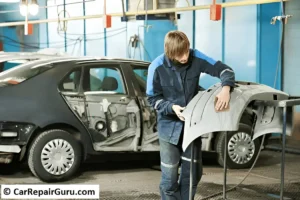
While DIY bumper repair works for minor scratches and dents, more extensive damage often requires professional help. Auto body repair specialists have the tools, expertise, and materials to restore your bumper to its original condition, ensuring both safety and aesthetics.
When to Visit an Auto Body Shop for Collision Repair
You should consider professional car bumper repair if:
- The damage is extensive – Large cracks, deep dents, or shattered bumpers often require professional-grade materials and techniques to fix properly.
- The bumper is misaligned – If your bumper is loose, misaligned, or detached, it may affect safety by failing to absorb impact correctly.
- There is structural damage – Underlying components like the reinforcement bar, brackets, or sensors may need realignment or replacement.
- Your car has advanced safety features – Vehicles with parking sensors, cameras, or ADAS (Advanced Driver Assistance Systems) require precise recalibration after repairs.
- You want a factory-quality finish – Matching paint, smoothing out imperfections, and achieving a seamless look is challenging with DIY bumper repair. Professionals ensure a flawless result.
Breakdown of Car Bumper Repair Costs
The cost of car bumper repair depends on the severity of the damage, the type of vehicle, and labor rates. Here’s an estimate based on common issues:
| Type of Damage | DIY Cost | Professional Cost |
|---|---|---|
| Light Scratches & Scuffs | $20–$100 | $100–$300 |
| Dents (No Paint Damage) | $30–$150 | $150–$600 |
| Deep Scratches & Chips | $50–$200 | $300–$700 |
| Cracks & Structural Damage | $100–$300 | $400–$1,500 |
| Full Bumper Replacement | $500–$800 | $1,000–$2,500+ |
Factors Affecting the Cost
- Material type – Plastic bumper repair is generally cheaper than repairing or replacing metal bumpers.
- Extent of damage – A minor bumper dent removal costs significantly less than fixing deep cracks or repainting.
- Labor rates – Prices vary depending on location and the expertise of the auto body shop.
- Paint matching and refinishing – If repainting is required, costs increase based on color complexity and quality.
Advantages of Professional Auto Body Repair vs. DIY Fixes
| Aspect | DIY Bumper Repair | Professional Repair |
|---|---|---|
| Cost | Lower cost, but may require multiple attempts. | Higher upfront cost, but long-lasting results. |
| Quality | May leave visible imperfections. | Factory-quality finish and precise color matching. |
| Time | Takes longer due to learning curve. | Faster, with specialized tools and experience. |
| Complex Repairs | Limited to minor scratches and small dents. | Can fix deep cracks, misalignment, and structural damage. |
| Safety | Risk of improper repairs affecting bumper integrity. | Ensures structural integrity and alignment with safety features. |
When to Choose DIY vs. Professional Repair
- DIY bumper repair is best for minor scratches and dents that don’t compromise safety.
- Professional auto body repair is essential for deep cracks, severe dents, or safety system recalibrations.
While fixing small issues at home can save money, professional repair guarantees durability, precision, and a seamless finish. If your bumper damage is more than cosmetic, visiting an auto body shop is the best decision.
Cost of Car Bumper Repair & Replacement
The cost of car bumper repair varies based on the type and extent of the damage. Whether you’re dealing with minor scratches or a complete bumper replacement, understanding the expenses involved can help you make an informed decision.
Average Car Bumper Repair Cost
| Type of Damage | DIY Cost | Professional Cost |
|---|---|---|
| Scratch Removal | $20–$50 | $50–$150 |
| Dent Repair (No Paint Damage) | $30–$150 | $150–$600 |
| Deep Scratches & Paint Chips | $50–$200 | $300–$700 |
| Cracks & Structural Damage | $100–$300 | $400–$1,500 |
| Full Bumper Replacement | $500–$800 | $1,000–$2,000+ |
Key Cost Breakdowns
- Scratch Removal ($50–$150): Minor scratches and scuffs can be buffed out or touched up with scratch removers and touch-up paint.
- Dent Repair ($150–$600): Small bumper dent removal can be done with suction tools or heat, but larger dents may require reshaping and repainting.
- Cracks & Deep Damage ($400–$1,500): Plastic bumper repair may involve welding, filling, and repainting, which increases labor and material costs.
- Full Bumper Replacement ($1,000–$2,000+): If the bumper is too damaged to repair, replacement costs include the new bumper, labor, and repainting.
Factors Affecting Bumper Repair Pricing
Several factors influence the cost of car bumper repair:
- Severity of Damage – Minor bumper scratch repair is much cheaper than fixing deep cracks or structural damage.
- Labor Costs – Auto body shop rates vary by region, with urban areas often charging more.
- Material Type – Plastic bumpers are more affordable to repair than metal bumpers, which require specialized techniques.
- Paint Matching & Refinishing – If repainting is necessary, costs increase depending on the complexity of the color.
- Vehicle Make & Model – Luxury or imported cars tend to have higher repair costs due to custom parts and specialized labor.
Comparing Professional vs. DIY Bumper Repair Expenses
| Aspect | DIY Repair | Professional Repair |
|---|---|---|
| Cost | Lower, but may require multiple attempts. | Higher, but ensures high-quality results. |
| Time | Takes longer due to learning curve. | Faster, completed by experts with specialized tools. |
| Durability | May not last as long if not done correctly. | Factory-quality finish and long-lasting repairs. |
| Safety | Risk of improper repair affecting bumper integrity. | Ensures proper alignment and function. |
Final Thoughts
If the damage is minor, DIY bumper repair can save money. However, for deep dents, cracks, or safety-related issues, a professional auto body repair ensures durability, precision, and a seamless finish. Investing in professional repairs can prevent future issues and maintain your car’s resale value.
Preventive Measures & Bumper Maintenance Tips
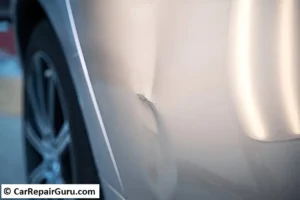
Keeping your car’s bumper in good condition can save you from costly car bumper repair in the long run. By following simple maintenance and preventive steps, you can reduce the risk of damage and extend the life of your bumper.
Regular Inspection and Cleaning
Routine bumper maintenance helps identify minor issues before they worsen. Here’s how to keep your bumper in top shape:
- Inspect for Scratches & Cracks – Check for minor damage regularly to address scratches or chips before they spread.
- Wash Your Bumper Frequently – Dirt, grime, and road salt can cause paint damage and corrosion over time. Use a mild car wash soap and microfiber cloth to clean your bumper.
- Apply a Protective Wax or Sealant – Waxing your bumper adds an extra layer of protection against dirt, water, and UV rays.
Using Bumper Guards to Reduce Impact Damage
Bumper guards and protectors act as a shield against minor collisions and scratches, especially in urban areas or tight parking spaces. Consider these protective options:
- Front and Rear Bumper Guards – Rubber or foam guards absorb small impacts, preventing dents and scuffs.
- Corner Protectors – Ideal for preventing scrapes in tight spots.
- Parking Sensors & Cameras – Many modern vehicles have these features to help avoid bumper damage while parking.
Safe Driving Habits to Avoid the Need for Collision Repair
The best way to reduce auto body repair costs is by practicing careful driving habits:
- Maintain a Safe Following Distance – Sudden stops can lead to rear-end collisions and bumper damage.
- Be Cautious in Parking Lots – Low-speed accidents often happen in parking spaces. Take your time when maneuvering.
- Avoid Harsh Road Conditions – Potholes, curbs, and debris can cause cracks and dents in your bumper.
- Use Defensive Driving Techniques – Stay aware of your surroundings to minimize the risk of accidents.
By following these preventive measures, you can reduce the chances of costly car bumper repair and keep your vehicle looking great.
Conclusion
Maintaining and repairing your car bumper is essential for both safety and aesthetics. Whether you choose DIY bumper repair for minor scratches and dents or visit an auto body shop for professional repairs, understanding the process and costs involved can help you make the best decision.
Regular bumper maintenance, such as cleaning, inspections, and using protective guards, can prevent unnecessary damage and costly collision repair. Additionally, practicing safe driving habits reduces the risk of accidents that may require extensive auto body repair.
While DIY car bumper repair is cost-effective for minor issues, professional services ensure a factory-quality finish and structural integrity for more severe damage. If your bumper has deep cracks, misalignment, or is part of a safety system, seeking expert repair is the best choice.
By taking preventive measures and addressing damage promptly, you can extend the life of your bumper, maintain your car’s value, and save on long-term car bumper repair costs.
Car Bumper Repair FAQ:
How much does car bumper repair cost?
The cost varies depending on the damage. Minor scratches cost $50–$150, while deeper dents and cracks range from $150–$600. Full bumper replacement can exceed $2,000.
Can I repair a car bumper myself?
Yes, minor DIY bumper repair is possible using scratch removers, heat methods, and plastic weld kits. However, severe damage may require professional auto body repair.
How long does a bumper repair take?
Minor car bumper repair takes a few hours, while professional collision repair can take 1–3 days, depending on the extent of the damage.
Is it better to repair or replace a bumper?
If the damage is minor, a plastic bumper repair or dent removal is sufficient. However, if the bumper is structurally compromised, a bumper replacement is the safer option.
Does insurance cover bumper repairs?
It depends on your policy. Comprehensive and collision coverage often include car bumper repair, but you may need to pay a deductible.
